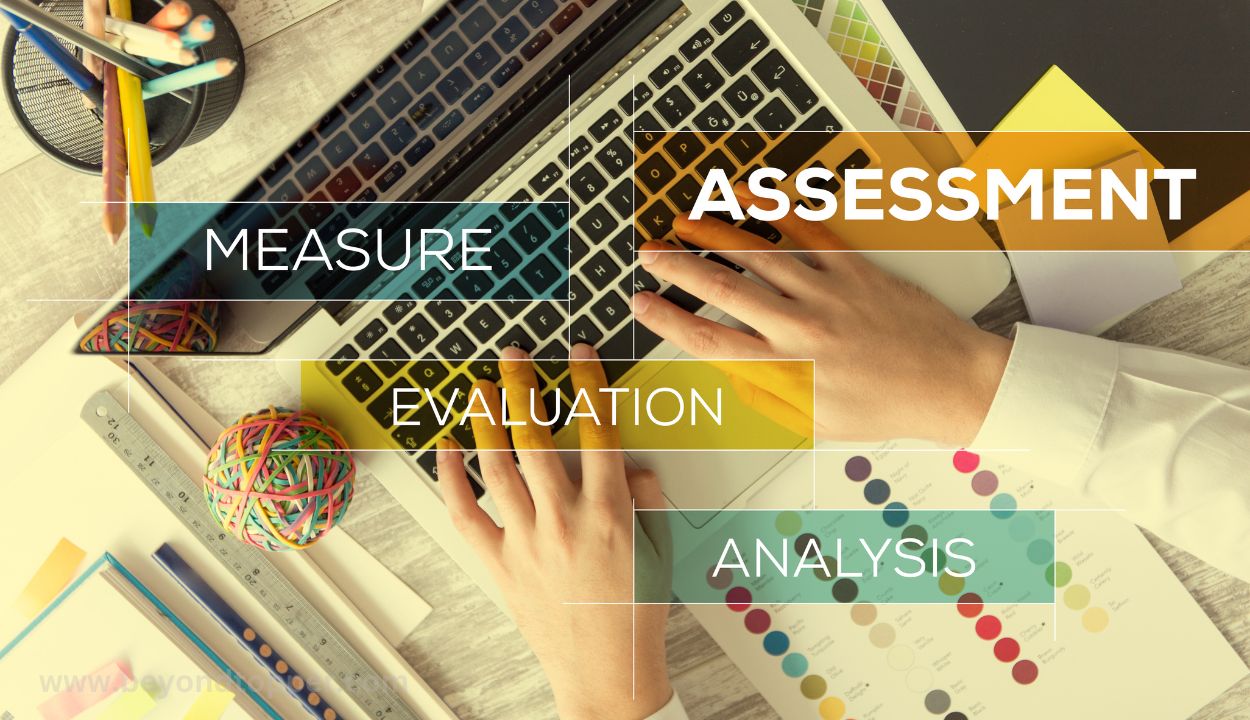Education is a powerful tool that shapes the future of individuals and society. Educational equity, we know what works, is the cornerstone of a fair and inclusive educational system. It ensures that every student, regardless of their background, has the opportunity to succeed. By providing the necessary support and resources, we can bridge the gaps that have long existed in our education system, creating a brighter and more equitable future for all.
At BeyondTopper, educational equity is not just a goal but a journey. It involves understanding and addressing the unique needs of each student, fostering an environment where all learners can thrive. This comprehensive guide explores the key strategies and actions required for education. Focusing on real-world examples, practical insights, and data-driven approaches, we aim to inspire educators, policymakers, and communities to make a lasting impact.
What is Educational Equity?

Educational equity means giving every student the support they need to succeed. It involves creating an educational system where all students receive the necessary resources and opportunities. This ensures that regardless of a student’s background, each one can achieve their educational goals. Educational equity, we know what works, is vital for fair learning environments. By addressing individual needs, educators can help bridge gaps caused by various socio-economic factors.
Equity in the Classroom
Promoting equity in the classroom involves adapting teaching methods to meet diverse learning needs:
- Auditory learners benefit from discussions and verbal instructions.
- Visual learners thrive with diagrams and color-coded notes.
- Tactile learners may need hands-on activities.
By addressing these differences, teachers create an inclusive and supportive learning environment. Educational equity, we know what works, is essential for these strategies. Teachers can use various tools and techniques to cater to different learning styles, ensuring all students can engage with the material effectively.
Why is Educational Equity Important?
Educational equity, we know what works, is crucial for a fair and just society. When all students have access to quality education, they are more likely to succeed academically and professionally. This benefits individuals and has positive effects on the community and economy. Ensuring equity helps close achievement gaps and promotes social mobility. We know what works and is key to these benefits.

Moreover, educational equity fosters a sense of belonging and self-worth among students. When students see their unique needs are being addressed, they are more likely to engage in their education. This increased engagement leads to better academic outcomes and personal development. We know what works and enhances student motivation and confidence.
How to Achieve Educational Equity
We know what works: Achieving educational equity requires a comprehensive approach involving various strategies and stakeholders. It begins with addressing systemic issues such as poverty, discrimination, and bias that significantly impact students’ educational experiences. Schools can partner with community organisations to support students facing these challenges, offering resources like food programs, counselling services, and after-school activities.
Leadership and administration are crucial in promoting educational equity; we know what works. School leaders must implement policies that support equitable practices, such as equitable funding distribution and inclusive hiring. Establishing equity committees to review school policies and practices regularly helps maintain a focus on fairness and inclusion. Engaging stakeholders, including parents, community leaders, and policymakers, fosters a collaborative approach to creating student support networks.
Addressing Systemic Issues in Educational Equity
Systemic issues such as poverty, discrimination, and bias significantly impact students’ educational experiences. By addressing these root causes, we can remove barriers to learning. This involves working with policymakers, community leaders, and educators to develop inclusive policies and practices. We know what works and guides these efforts.

Schools can partner with community organisations to support students facing systemic challenges. These partnerships can offer resources such as food programs, counselling services, and after-school activities. We know what works, including leveraging community resources to support students.
Importance of Leadership and Administration in Educational Equity
School leaders and administrators are crucial in promoting educational equity; we know what works. They set the tone for inclusive practices and ensure that equity is a priority in all decisions. Teachers should collaborate with leaders to identify and address inequities, fostering a culture of fairness and inclusion. Educational equity, we know what works, is essential for effective leadership.
Administrators should implement policies that support equitable practices, such as equitable funding distribution and inclusive hiring practices. These policies ensure that all students have access to high-quality education and resources. Educational equity, we know what works, is driven by strong administrative support.
Removing Barriers in the School Environment for Educational Equity
Early identification of learning gaps and providing targeted support can significantly impact student success:
- Tutoring programs can offer personalised assistance.
- After-school activities provide additional learning opportunities.
- Parent-teacher conferences keep families informed and involved.
This collaborative approach helps ensure that all students receive the support they need to excel. Educational equity is at the heart of these strategies, and we know what works. Schools should also offer flexible learning options, such as online resources and alternative schedules, to accommodate student needs.
Embracing Technology for Educational Equity
Technology can be a powerful tool for promoting educational equity; we know what works:
- Providing access to digital tools and resources helps bridge gaps for students who may lack these at home.
- Incorporating technology in the classroom supports diverse learning styles and makes education more accessible.
Educational equity, we know what works, drives the integration of technology. Schools should ensure all students have access to necessary devices and internet connectivity. This can be achieved through loan programs or partnerships with local businesses and organisations.
Regular Assessment of Student Performance for Educational Equity
Continuous assessment helps teachers identify areas where students may need additional support:

- Regular monitoring and feedback allow educators to adjust their strategies to meet students’ needs better.
- Ongoing evaluation ensures that all students are progressing and achieving their educational goals.
Educational equity, we know what works, is key to effective assessment. Schools should use various assessment methods, including formative and summative assessments, to comprehensively assess student progress.
Professional Development for Educators to Promote Educational Equity
Ongoing professional development is essential for teachers to promote educational equity effectively; we know what works:
- Training programs and workshops help educators learn new strategies for inclusive teaching.
- Investing in professional growth ensures that teachers are well-equipped to support all students.
Professional learning communities (PLCs) can provide a platform for teachers to share best practices and collaborate on equity initiatives. These communities foster a culture of continuous improvement and collective responsibility. Educational equity, which means we know what works, is supported by collaborative professional growth.
Engaging Stakeholders in the Educational Equity Effort
Achieving educational equity, we know what works, requires the involvement of various stakeholders:

- Building strong partnerships with parents, community organisations, and policymakers is crucial.
- Fostering open communication helps create a supportive network for students.
Collaborative efforts ensure that equity initiatives are sustainable and impactful. Educational equity, we know what works, encourages stakeholder engagement. Schools should involve stakeholders in decision-making processes and seek their input on equity initiatives.
Community engagement can be enhanced through regular events, workshops, and forums that unite educators, parents, and community members. These events provide opportunities for dialogue and collaboration. Educational equity thrives on community involvement. We know what works.
Policy Recommendations for Educational Equity
Policymakers play a vital role in promoting educational equity; we know what works:
- Developing and implementing policies prioritising fairness and inclusion can help create a more equitable educational system.
- These policies should focus on providing resources for underserved communities, supporting diverse learning needs, and promoting inclusive practices across schools.
Educational equity: We know what works, and we shape effective policies. Legislators should work with educators and advocates to develop policies that address the root causes of educational inequity.
Feedback Mechanisms for Continuous Improvement in Educational Equity
Collecting feedback from students, parents, and teachers is crucial for continuously improving educational practices:
- Regular surveys and open forums can provide valuable insights into the effectiveness of equity initiatives.
- Using this feedback to inform decision-making ensures that strategies remain relevant and effective.
Educational equity, we know what works, relies on constructive feedback. Schools should establish clear channels for collecting and analysing feedback, ensuring that all voices are heard.
Feedback should be used to make data-driven adjustments to programs and policies. This iterative feedback and improvement process helps maintain the effectiveness of equity initiatives. Educational equity, we know what works, is a continuous journey.
The Role of Interdisciplinary Approaches
Integrating arts, sports, and extracurricular activities into the curriculum can enhance educational equity, we know what works:

- These interdisciplinary approaches provide diverse learning experiences and help students develop various skills.
- Encouraging participation in various activities promotes inclusivity and supports overall student development.
Educational equity, we know what works and benefits from interdisciplinary methods. Schools should offer various programs to engage students’ interests and talents, fostering a well-rounded education.
Case Studies and Examples
Including real-world examples of schools that have successfully implemented equity-focused practices can provide practical insights:
- Case studies can inspire other educators and administrators by showcasing effective strategies.
Educational equity, we know what works, is demonstrated through these success stories. For example, some schools have improved equity by implementing restorative justice programs to address disciplinary issues. These programs focus on conflict resolution and relationship-building rather than punishment.
Another example is using culturally responsive teaching practices to connect curriculum content to students’ cultural backgrounds. This approach has been shown to improve engagement and academic achievement. Educational equity, we know what works, is evident in these successful implementations.
Metrics and Data for Measuring
Using specific metrics and data points to measure the success of equity initiatives is essential:

- This includes tracking academic outcomes, attendance rates, and student engagement levels.
Educational equity, we know what works, is supported by data-driven insights. Schools should use data to identify achievement gaps and allocate resources where needed.
Regularly reviewing data helps ensure that equity initiatives are having the desired impact. Schools should be transparent about their progress and share data with stakeholders to maintain accountability. Educational equity, we know what works, is grounded in measurable outcomes.
Engaging Other Stakeholders
Beyond parents and community organisations, engaging business leaders and local officials can strengthen efforts:
- Collaborative initiatives can provide additional resources and support for schools.
Educational equity: we know what works and benefits from a wide range of partnerships. Businesses can offer internships, mentorship programs, and financial support to enhance educational opportunities for students.
Conclusion
- Educational equity, we know what works, is essential for creating a fair and just society.
- By providing all students with the support and resources they need, we can ensure that everyone has the opportunity to succeed.
- Implementing strategies such as addressing systemic issues, promoting leadership involvement, removing barriers, embracing technology, and regular assessment can help achieve this goal.
- Engaging stakeholders, developing supportive policies, and using feedback mechanisms are crucial to promoting equity.

One Reply to “Educational Equity: We Know What Works and How to Implement It Effectively”